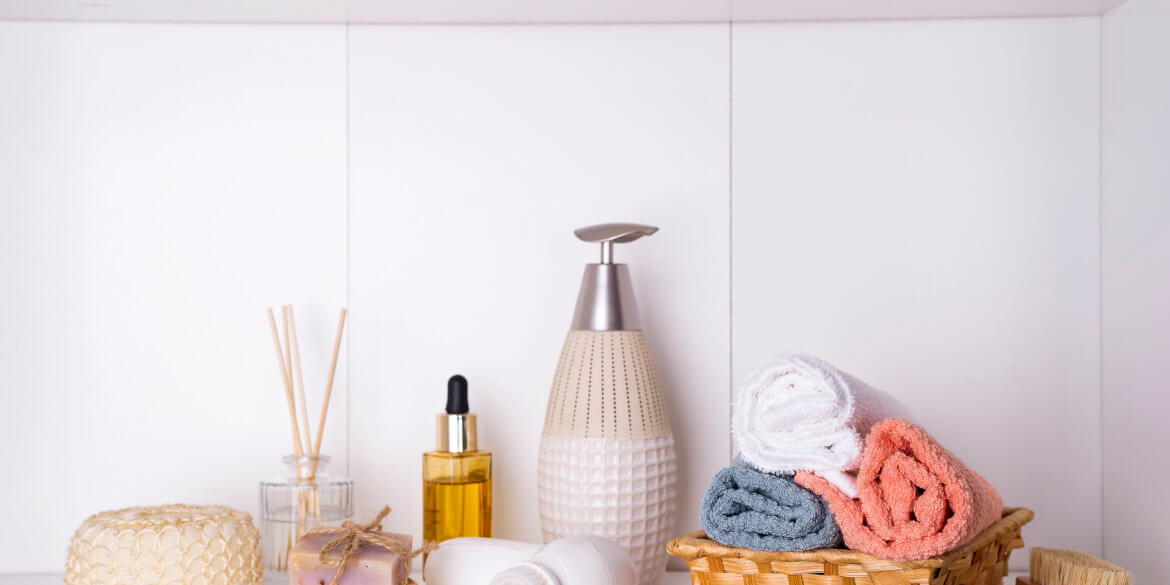Good personal hygiene care is essential to maintain a person’s morale and to prevent further health problems. Engaging in good hygiene can promote comfort and health, prevent body and breath odour, and improve skin circulation. If you are not too sure about how to properly care for your loved one especially when he or she has limited mobility, here is an all you need to know guide on the different aspects of personal hygiene.
- Bed Bath
For bed bound patients that have difficulties in movement, bed bath helps to improve blood circulation and keep them clean by removing dead skin, sweat, excess oils. During bath times, take note of the patient’s body for unusual conditions. For example, the elderly tend to have dry and fragile skin. Hence, it is important to rinse extra carefully with water as soap have a drying effect on skins. You can also use moisturisers and oils to help keep the skin hydrated. Follow these steps for better personal hygiene care for your loved ones.
Cleaning the eyes:
-
- Place a bath towel under his head and on his chest to manage splashes.
-
- Use a moist cotton swab or a moist bath towel to gently wipe from the inner eye to the outer eye.
-
- Do not use soap as it can be irritating to the eye.
-
- Soak any crusts on the eyelid for 2-3 mins with a moist towel before attempting removal gently.
- Dry the eyes with care.
Cleaning the Upper body:
-
- Ensure the temperature of the water is luke-warm
-
- Wash, rinse, and pat the forehead, cheeks, nose, neck and ear dry with a moist towel.
-
- Clean the insides of the ear and nose more thoroughly with cotton sticks
- Clean the skin folds of the neck carefully as it is more susceptible to collection of dirt.
-
- Place a towel under the arm to prevent getting the bed wet.
-
- Support the patient’s arm with your palm under his elbow.
-
- Clean the arms from the shoulder to the elbow with firm, long strokes.
-
- Dip the patient’s hands into a basin of water to wash.
- Clean under the fingernails with a cotton stick.
-
- To clean the chest area, remove the blanket carefully without exposing the patient’s body. Reach under and clean the chest.
- Pat dry with a clean bath towel.
Cleaning the lower body:
-
- Do the same thing you did with the chest area with the abdomen and clean the navel with a little lotion applied onto a cotton swab.
-
- To clean the legs, Bend the knee and support the leg with your hand to wash his legs.
-
- Dip the feet in a basin of water to wash them, taking note to wash between the toes thoroughly.
-
- Use a cotton stick to clean under the toenails.
-
- Apply lotion to the feet if they are dry but keep areas between toes dry to prevent fungal infection.
-
- To clean the genital areas for uncircumcised males, draw back the foreskin, rinse and dry. For females, spread her external folds and wash thoroughly.
- Pat dry
To complete:
-
- Rub the skin with body lotion to stay hydrated and improve blood circulation
-
- Change a new fresh set of clothes
- Apply talcum powder if needed to stay dry.
- Hair Shampooing in bed
Shampooing the hair can improve blood circulation in the scalp and provide as a treat especially for female recipients. For bed-bound patients, hair shampooing can be messy, but you can stay efficient by following the steps below:
-
- Position the head and shoulders at the top edge of the bed.
-
- place a waterproof mat or sheet under the patient’s head which drains to a basin or a pail at the bottom of the bed.
-
- Brush and comb through the patient’s hair and untangle.
-
- Drape a towel over the patient’s shoulders, protect his/ her ears with cotton and cover his/ her eyes with a washcloth.
-
- Slowly pour warm water over the hair until it is wet.
-
- Apply shampoo.
-
- Start at the hairline and work towards the back of the neck. Life the head slightly with one hand to wash the back of the head.
-
- Massage the head with fingertips and not nails.
-
- Rinse the hair with clean, lukewarm water thoroughly.
-
- Wrap head in a dry bath towel and be sure to pat dry the patient’s neck, face and shoulders.
- Dry the hair either with a towel or a hair dryer, but be careful not to burn the scalp.
- Oral Personal Hygiene Care
Oral care is an important part of personal hygiene. Some drugs taken orally may cause a bad taste in the mouth, or form a coating around the tongue. A dry mouth can also be common for patients that have difficulty breathing through his/ her nose. Oxygen treatment, decreased fluid intake and some medications can also cause dry mouth. Proper mouth care is needed to prevent bad breath and infections, reducing the risk for tooth decay and gum disease.
Brushing the teeth in an upright position
-
- Sit the patient up in an upright position
-
- Place a towel over the patient’s chest to manage splashes.
-
- Apply toothpaste and water onto a toothbrush with soft bristles
-
- Brush the outer surfaces of upper and lower teeth with short strokes from the gum to the crown of each tooth.
-
- Brush the inside of the teeth thoroughly too.
-
- Take note to brush too aggressively as gums may be sensitive and may bleed.
- Rinse mouth with water and pat the mouth area dry.
Oral Personal hygiene care for an unconscious patient
Personal Hygiene care is very important to an unconscious person. An unconscious person may need extra mouth care to prevent dryness and infections in the mouth. This is because an unconscious patient may breathe from his mouth open constantly and be unable to take in food with his. her mouth. This will cause dryness, crusting and bad breath.
-
- Make a padded tongue blade
- Wrap gauze around the top half of 2 wooden tongue blades and tape it in place
- Make a padded tongue blade
-
- Moisten some facial swabs with soda bicarbonate solution and some with thymol gargle.
-
- Wrap the moist swabs around the ice cream sticks as you did with the padded tongue blades.
-
- Turn the patient to a side lying position and turn his head to the side.
-
- Place a towel under the patient’s chin to manage splashes.
-
- Gently open the mouth with padded tongue blades by inserting the blade gently between the back molars.
-
- The tongue blades will keep the mouth open while you clean the mouth with the moist cotton swabs.
-
- Using the cotton swabs, clean the insides and the outer surface of the teeth.
-
- Make sure to clean out the roof of the mouth, cheek insides, and lips.
- Check for abnormalities such as ulcers and cavities.
- Nail Care
-
- Place the patient’s fingers in a basin or lukewarm water to soak for about 15 minutes.
-
- Using an orange stick, clean the underside of the fingernails gently.
-
- Dry fingers thoroughly
-
- Cut fingernails evenly with a nail clipper.
-
- Ensure that fingernails are kept short and rounded with rough edges smoothed away. Overly Long or short nails will cause injuries.
- Do the same with the toenails.
Lastly, there are many professional home care nurses who can provide the caregiver training help that you need, be it in personal hygiene, urinary catheter care, or NGT care. Do seek professional help if it will help you in your caregiving journey!
Award winning Home Care trusted by health professionals – Jaga-Me




